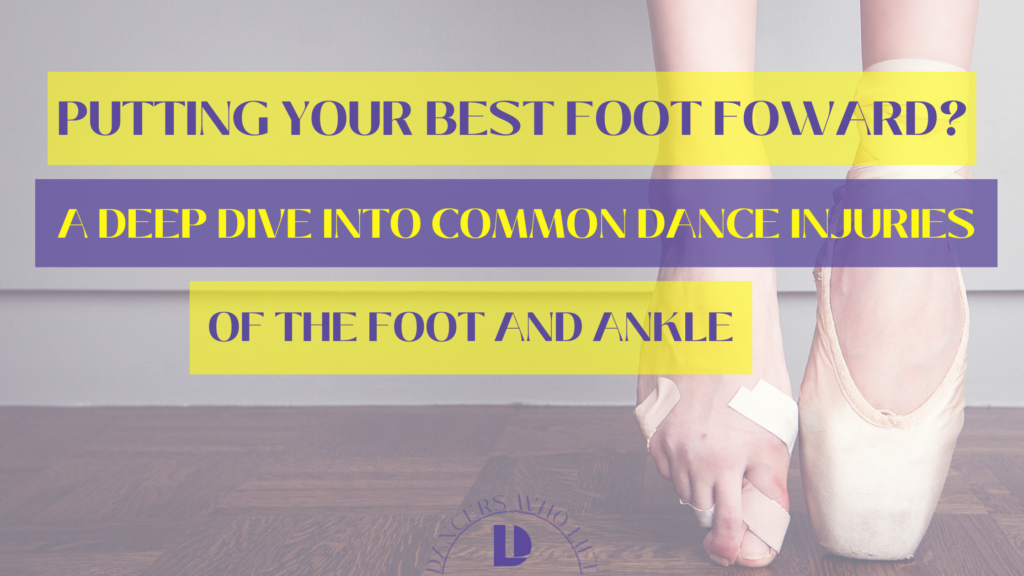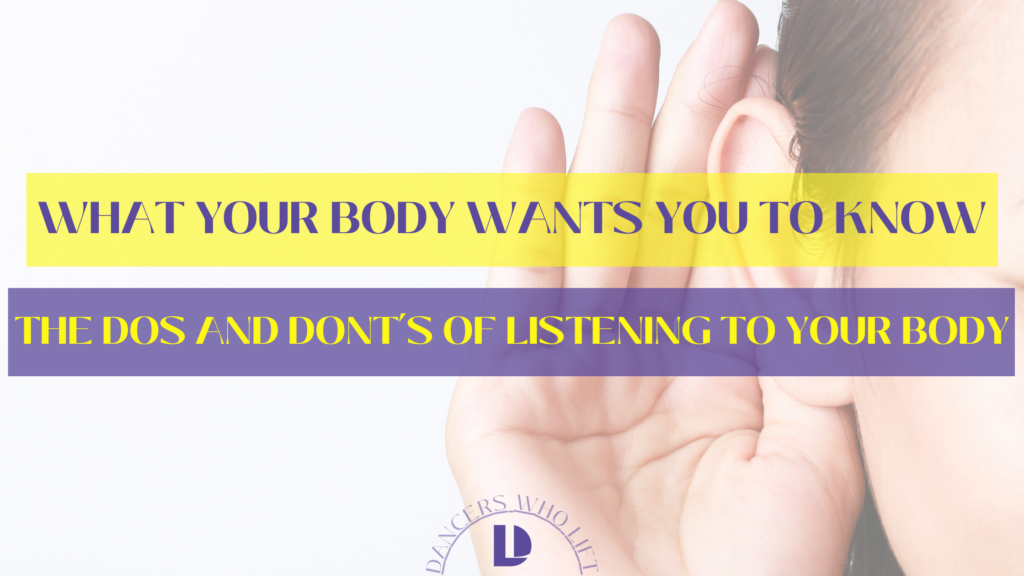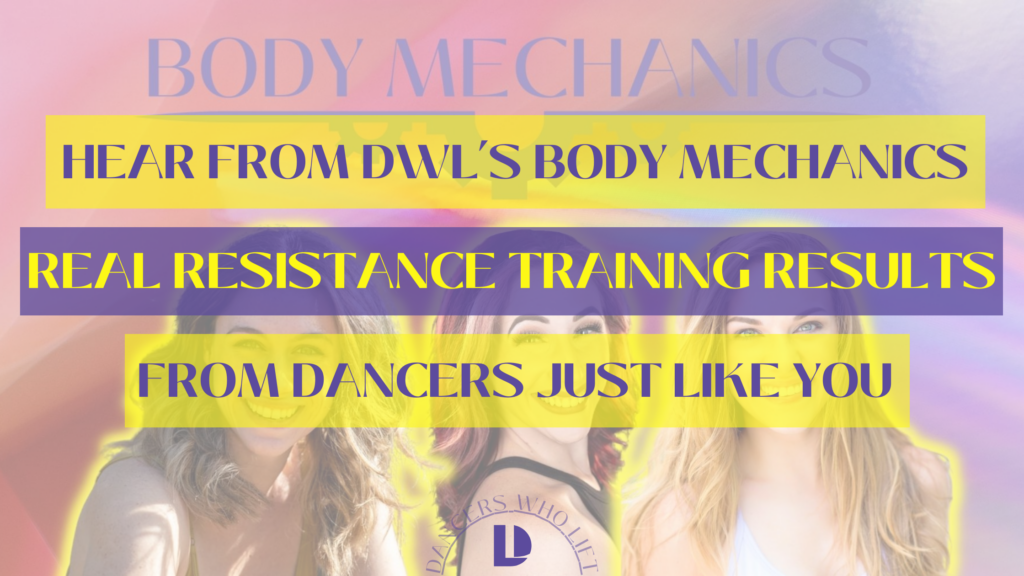As dance athletes the odds of us one day needing the help of a physical therapist are pretty good.
But have you ever wondered if there were things that your physical therapist wished you knew before you arrived in their office?
We asked our friends at Mims Method Physical Therapy this question and they actually had quite a lot to say on the topic. So much so, in fact, that we thought it was worth giving you the skinny.
9 Things Physical Therapists Wished Dance Athletes Knew
1. Pain Does Not Equal Gain
For dancers this might be a hard pill to swallow, but pain does not equal gain and more is not always better.
I know, I know, we were taught to push through.
We were taught that “one more time” is never the truth.
And what’s more, we were trained to think that stopping because of pain or exhaustion would mean we would be left in the dust.
But we’re here to tell you that pushing your body to the breaking point can actually lead to more time spent offstage due to injury.
Chris Falciano, a DPT at Mims, put it this way:
“Pain does NOT equal gain! Many dancers are highly motivated, and they come in thinking that more is always better. It’s important to find a good balance between pushing yourself and allowing your body to properly recover.”
Now, before you cancel your gym session, let me tell you that there are a few different types of recovery.
We talk a lot about taking recovery between workouts seriously; whether that’s an active recovery day or a complete rest day. But we don’t often talk about the importance of recovery breaks during your workout.
Studies have shown that taking adequate rest time between sets can actually produce greater increases in strength than pushing through for shorter rest times.
On top of that, giving your body that recovery time between sets also aides in preventing injuries that occur due to exhaustion.
TLDR? When your body hits max, listen to it.
2. Pain Isn’t Normal
Have you ever taken a Fosse class? If you have, you’ve likely heard the instructor say “If it kind of hurts or feels uncomfortable, you’re doing it right!”
And while this is true in the sense that holding your arms to do the “Fosse-Arms” while you walk is not the most comfortable or natural of positions, it does enforce the idea that pain in dance is somewhat normal.
In fact, a lot of what we do doesn’t feel great the first few times we do them– hello, pointe shoes!
But joint pain, shooting pain, and pain that is consistent and persistent is not actually normal. And, unfortunately, the belief that it is keeps dance athletes from visiting the PT!
“A lot of dancers write off their pain as “something that is normal” when we can actually reduce quite a bit of symptoms.” – Dr. Dan, DPT
That’s the thing about finding a physical therapist you can trust, their goal is to make what you do less painful so you can continue to flourish as dance athletes.
3. Don’t Forget to Work on Your “Turn-In”
Dr. Dan also had this recommendation for dance athletes entering their physical therapy era: don’t be afraid to work on your internal rotation. It won’t ruin your turn out.
Much like the rumor that lifting weights will decrease your flexibility, the idea that strengthening your internal hip rotation (ability to turn-in) will decrease your external hip rotation (turn-out) is false.
Training the full range of motion in your hips will create balanced strength and range of motion in your hip joint which will help you transition through movement. It has also been shown to correlate with fewer injuries!
But what’s probably the best argument for training your hips in every direction is the fact that healthy, strong hips, support healthy strong knees. So, if you’re a dancer with cranky knees, starting training those hips!
4. Stop Popping Your Hips
“If you pop those hips one more time…”
The PTs at Mims Method might work backstage at Chicago, but they would love it if they didn’t have to quote the show so often!
You know, what I’m talking about. That sideways leaning hip-hike that feels so good when the “pop” from your hip rings out.
I know this feels like a personal attack but…well, why don’t I let Dr. Kate Besong tell you why?
“Generally, popping your joints is likely not beneficial and may point to instability in that area. If it happens by accident while you’re moving, fine. But don’t force things to pop just to feel looser. Instead, focus on stability exercises and you’ll likely notice that your need to pop becomes less frequent.”
So give your PT a break from swinging on as Liz in cellblock tango and start working on your hip stability!
5. Stop Overstretching
Overstretching is something every dancer has done. Whether it’s literally sitting in an over-split or simply stretching for too long, our desire for soaring legs and impressive back bends can get dance athletes into trouble.
Contrary to how many dancers were trained, stretching should never reach the point of pain and, according to MIT, you should not be sore the day after a stretch session. If this happens, it’s time to decrease the intensity of your stretch sessions.
And those of you shaking your head right now saying, “But it feels good to stretch that deep!” Dr. Chris has a suggestion:
“We know your muscles feel tight sometimes, and getting into a deep stretch feels really nice. However, that doesn’t get to the root of the problem. In most of the cases I see, building strength and stability is a better long-term fix than stretching your hammys out for the 10th time today.”
6. Stretching is NOT a Warm-Up!
You’ve heard me say it before, but stretching is not a warm-up and these PTs all agree.
Active stretching can, and should, be a part of your warm-up. But it shouldn’t be the only aspect of your warm-up.
Instead, try a mobility flow followed by exercises sure to get your muscles activated. Not sure what this might look like?
Check out this follow-along warm-up we wrote specifically for auditions and performances! And feel free to add in your favorite stretch or exercise to lock yourself into the zone.
7. Don’t be Scared (We’re Here to Help!)
When asked what these Broadway PTs wished most that dance athletes knew, Founder of Mims Method PT, Brittney said this:
“Don’t be scared to see a PT! We aren’t here to tell you to stop doing what you love to do. We’re here to help you do it safely and help your career (or hobby) have longevity!”
We cannot emphasize enough how important it is to listen to your body. Seeing a PT does not mean that you’ll be out of the show. It might not even mean that you’re injured.
Seeing a PT simply means that you are willing to work to keep your instrument in tip-top shape for performance!
There’s a reason these PTs work backstage at shows. It’s to keep these dance athletes as pain free as possible and onstage, 8 shows a week!
8. “Prehab” is Just as Important as Rehab
Similarly, physical therapy is not only useful for rehab!
Brittney likes to encourage dancers to participate in what she calls “prehab!”
“PTs aren’t just for when you feel pain or when you’re already injured. At Mims Method PT, we do sooo much “prehab” or “preventative rehab”! We want to help dancers and performers before they get injured. We offer injury prevention workshops for dance companies and theaters and we offer individualized dancer screens in order to give dancers specific programming to help their muscle weakness, imbalances, etc. We see many patients for monthly maintenance visits to address any new choreography or mild aches they may have, or simply to update their warm up or exercise routine.”
If one-on-one personal training exists to fine tune your nutrition and exercise approach, physical therapy exists to fine tune the way dance athletes practice recovery and warm-ups.
Just like a soloist with a featured tilt will warm-up differently than the soloist with a featured jump, a dancer who struggles with ankle impingement should warm-up and cool down differently than a dancer with a hyper-mobile spine.
Physical therapy exists to pin-point and support those individual needs.
9. PT isn’t The Only Puzzle Piece You’re Missing
Just like weightlifting isn’t the only aspect of your cross-training, physical therapy should not be the only aspect of your recovery process.
“There are sooo many variables that can affect the way you feel: nutrition, hydration, sleep, stress, training intensity, cross-training intensity, etc! You can have the perfect routine of PT exercises, but if you’re not sleeping well (quality AND quantity) then your body will have a harder time recovering.” — Kate Besong, DPT
If you’re experiencing injury use this time to zero in on your self-care.
No, I don’t mean bubble baths and face masks.
I’m talking about ensuring you’re drinking enough water.
Creating a nighttime routine that supports your goal to get enough sleep.
Looking at your training schedule and deciding if you might need to pull back in certain areas to support your recovery.
This is the kind of self-care that will support your physical therapy journey and get you back on stage faster than ever.
Whether you’re experiencing an injury or not, physical therapy can be a huge asset to your career as a dancer.
Go into your next appointment with your head held high ready to support your therapy with these tips and you just might become your therapists favorite client.
That is, if you weren’t already!
Want more tips from PTs who just get dancers?
Follow along on the blog all spring for more interviews with Broadway’s Physical Therapists.
Missed the last post? Give it a read, here.
We’re dropping exclusive emails with physical therapy exercises from a different member of the Mims Method team each week!
You won’t want to miss this series! Opt-in for these exclusive exercises here!
Want more tips about fitness, PT, nutrition and more? Check out these quick reads on the blog: Training Tip Tuesday: Confidence Corner, the Gymitmidation Secret, Life After Macros: The Principles of Intuitive Eating, Explained, Keeping Things Cool: The Benefits of Deliberate Cold Exposure for Dancers











